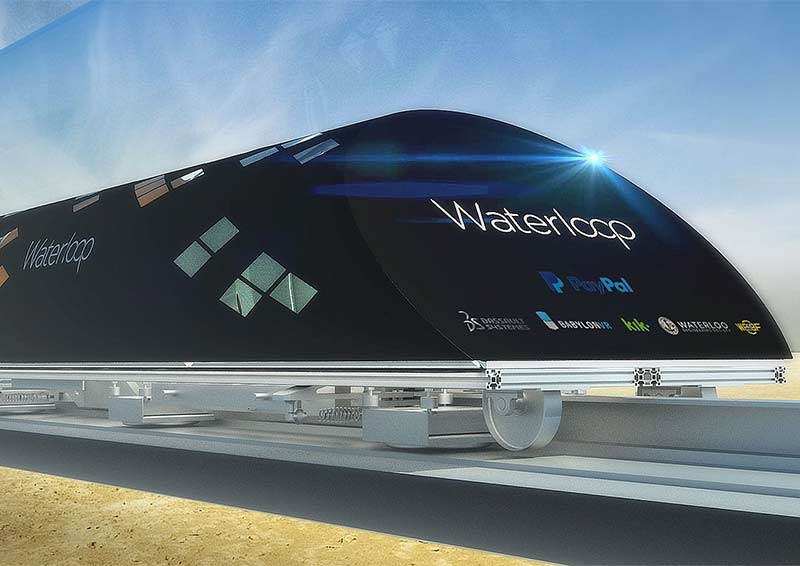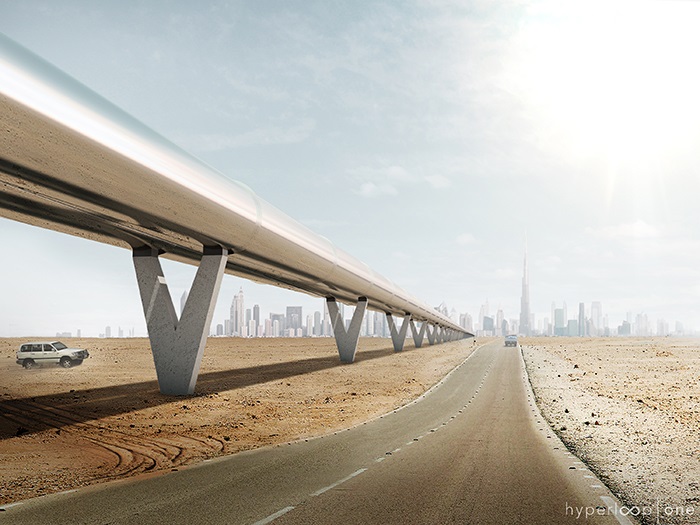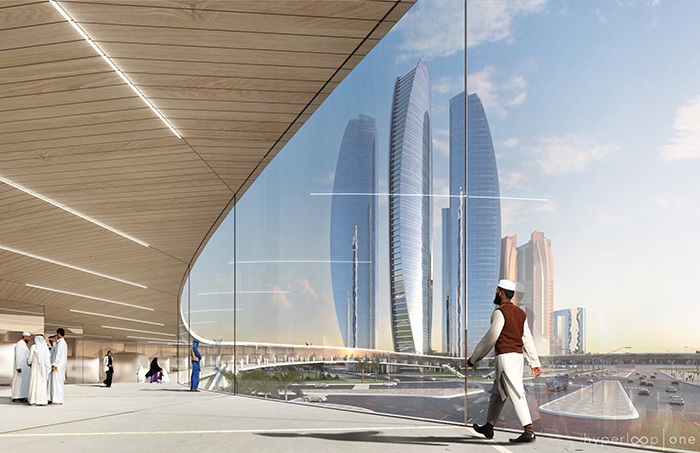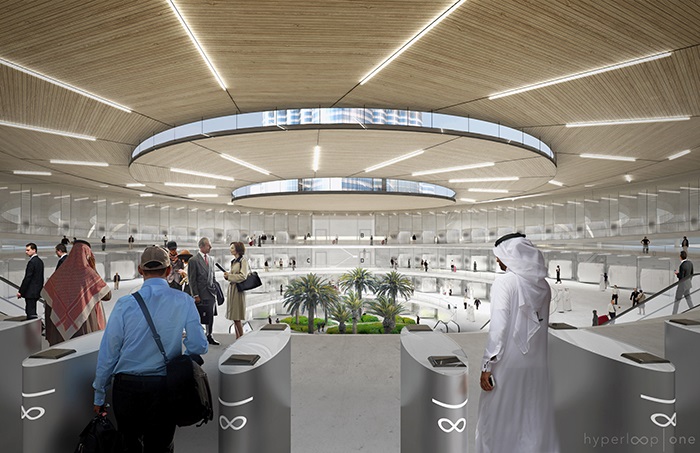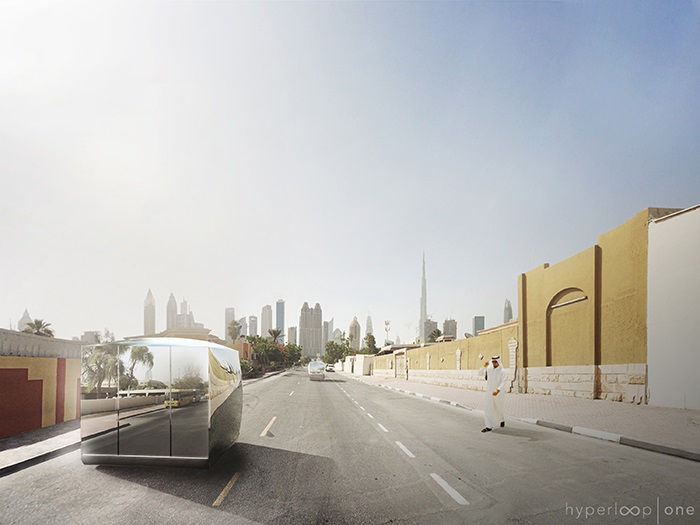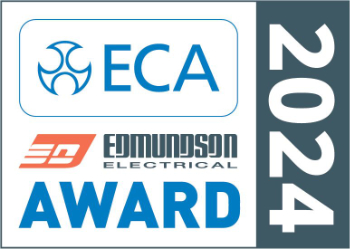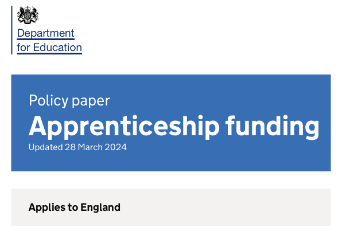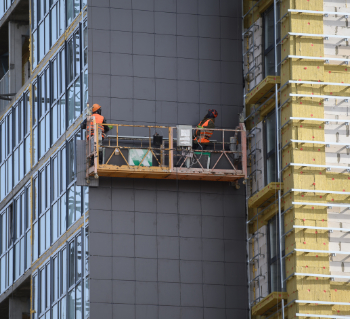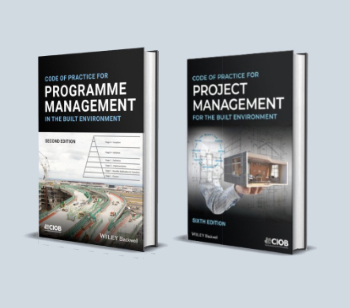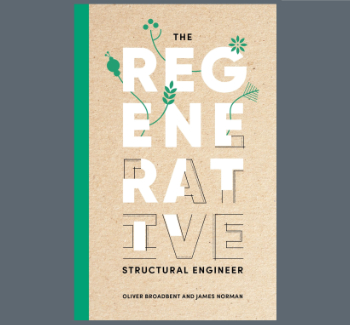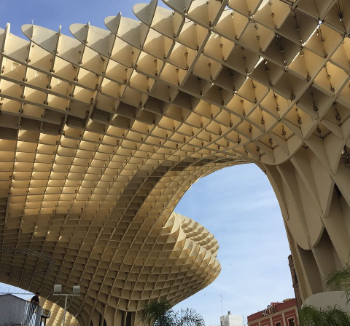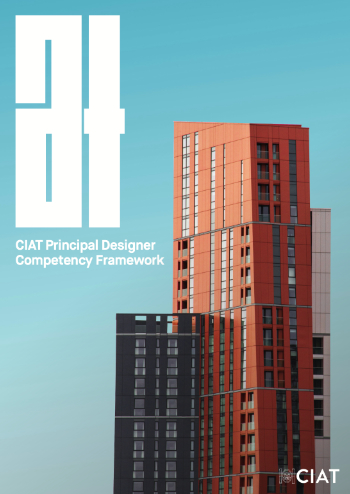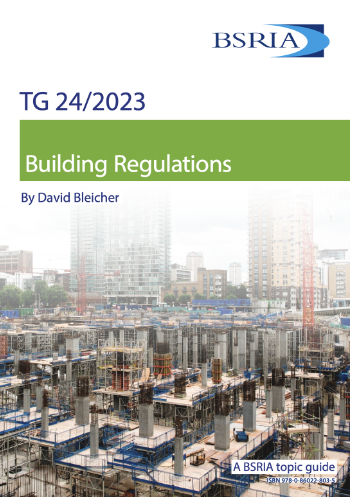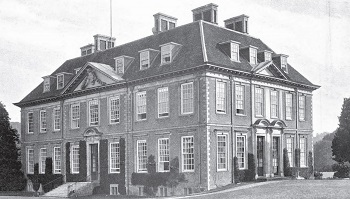Hyperloop One
In November 2016, BIG-Bjarke Ingels Group unveiled designs for an autonomous transportation system and the world’s first Hyperloop pods and portals in Dubai, UAE.
BIG and Hyperloop One have partnered on a detailed feasibility study financed by the RTA. The team has been working on the concept for autonomous transportation in the UAE since May 2016. Hyperloop One will move passengers and cargo between two points quickly, safely, efficiently and sustainably.
The proposals will reduce the current journey time between downtown Dubai to downtown Abu Dhabi from a two-hour drive to just 12 minutes.
Hyperloop is autonomous, point-to-point and aims to simplify the experience of getting from front-door to final destination.
All elements of the travel experience are designed to increase convenience and reduce interruptions. The objective is to eliminate waiting from the passenger experience. All departure gates are immediately visible upon entering the portal, and a simple numbering system allows passengers to quickly identify them.
Passengers will travel in pods that have room for 6 people. The pods are contained within a transporter, a pressure vessel attached to a chassis for levitation and propulsion that can accelerate the transporter to 1,100 km/h.
Passengers board the next pod that is available, which moves onto a transporter to their final destination. The relatively small unit-size of the pods paired with a high arrival and departure-rate allows for on-demand travel.
Different interior environments and seating arrangements offer passengers a travel experience tailored to their needs, whether travelling solo or in groups, for business meetings or casual trips.
The pods operate autonomously from the transporter, meaning that they are not limited to the portal area and can move on regular roads, picking up passengers at any point. At portals, pods are loaded onto the transporter and 'hyperjump' to another portal, where they merge onto the street and drop passengers off at their final destination.
Josh Giegel, President of Engineering, Hyperloop One, said:
"Together with BIG, we have worked on a seamless experience that starts the moment you think about being somewhere – not going somewhere. We don’t sell cars, boats, trains, or planes. We sell time.”
Bjarke Ingels, Founding Partner, BIG, said:
“Hyperloop One combines collective commuting with individual freedom at near supersonic speed. We are heading for a future where our mental map of the city is completely reconfigured, as our habitual understanding of distance and proximity – time and space – is warped by this virgin form of travel.”
Based in Los Angeles, Hyperloop has some of the world’s leading experts in engineering, technology and transport project delivery, working in tandem with global partners and investors to make Hyperloop a reality.
Content and images courtesy of Hyperloop.
For a Hindi translation of this article, see here.
For a Urdu translation of the article, click here
[edit] Find out more
[edit] Related articles on Designing Buildings Wiki
- 2 hours to 30 minutes. This is what our technology could do to your commute.
- 7 Engineering Wonders of the World.
- CarTube.
- Crossrail 2.
- Engineering smart cities.
- High Speed 2 (HS2).
- Hyperloop in Dubai.
- Infrastructure.
- Smart motorway.
- Sustainable transport.
- The challenges facing Hyperloop One.
- The transport revolution of Hyperloop.
- Transit Elevated Bus (TEB).
- Transport design and health.
Featured articles and news
ECA 2024 Apprentice of the Year Award
Entries open for submission until May 31.
UK gov apprenticeship funding from April 2024
Brief summary the policy paper updated in March.
For the World Autism Awareness Month of April.
70+ experts appointed to public sector fire safety framework
The Fire Safety (FS2) Framework from LHC Procurement.
Project and programme management codes of practice
CIOB publications for built environment professionals.
The ECA Industry Awards 2024 now open !
Recognising the best in the electrotechnical industry.
Sustainable development concepts decade by decade.
The regenerative structural engineer
A call for design that will repair the natural world.
Buildings that mimic the restorative aspects found in nature.
CIAT publishes Principal Designer Competency Framework
For those considering applying for registration as a PD.
BSRIA Building Reg's guidance: The second staircase
An overview focusing on aspects which most affect the building services industry.
Design codes and pattern books
Harmonious proportions and golden sections.
Introducing or next Guest Editor Arun Baybars
Practising architect and design panel review member.
Quick summary by size, shape, test, material, use or bonding..








